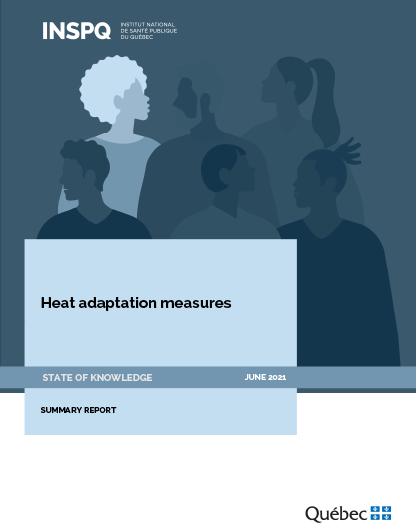Heat adaptation measures
This literature review, initiated at the request of the Table de concertation nationale en santé environnementale (TCNSE), aims to identify groups at risk during heat events and the adaptation measures proposed by other government agencies and in the scientific literature in order to:
- Recommend, if necessary, the adjustment of risk groups already targeted by the MSSS or the addition of new groups.
- Recommend, if necessary, the adjustment of adaptation measures currently recommended by the MSSS or the addition of new measures.
- Recommend, if necessary, the adjustment of heat adaptation measures in the context of the COVID-19 pandemic.
Highlights
- Average temperatures as well as the intensity and frequency of heat waves will continue to increase due to climate change. This puts public health at risk.
- The purpose of this literature review is to update the information contained in the 2006 Ministère de la Santé et des Services sociaux (MSSS) report on the most relevant and effective measures for adapting to heat. The review made it possible to:
- Corroborate the relevance of the risk groups targeted by the MSSS and the soundness of adaptation measures to counter the adverse effects of heat on health.
- Make specific recommendations for risk groups, such as people with limited mobility or limited contact with family or friends.
- Recommend adding a new risk group: pregnant women and their foetus.
- Recommend adding details to adaptation measures. For example, during heat events, regularly visit at-risk people. This helps visitors identify signs of heat-related illnesses more quickly than over the telephone.
- Recommend adding new adaptation measures, such as getting in shape or using an electric fan.
- The results of this review will allow public health authorities, more specifically environmental health professionals from the regional public health departments and the MSSS, to strengthen their capacity for decision-making with respect to heat in order to reduce heat-related morbidity and mortality.


